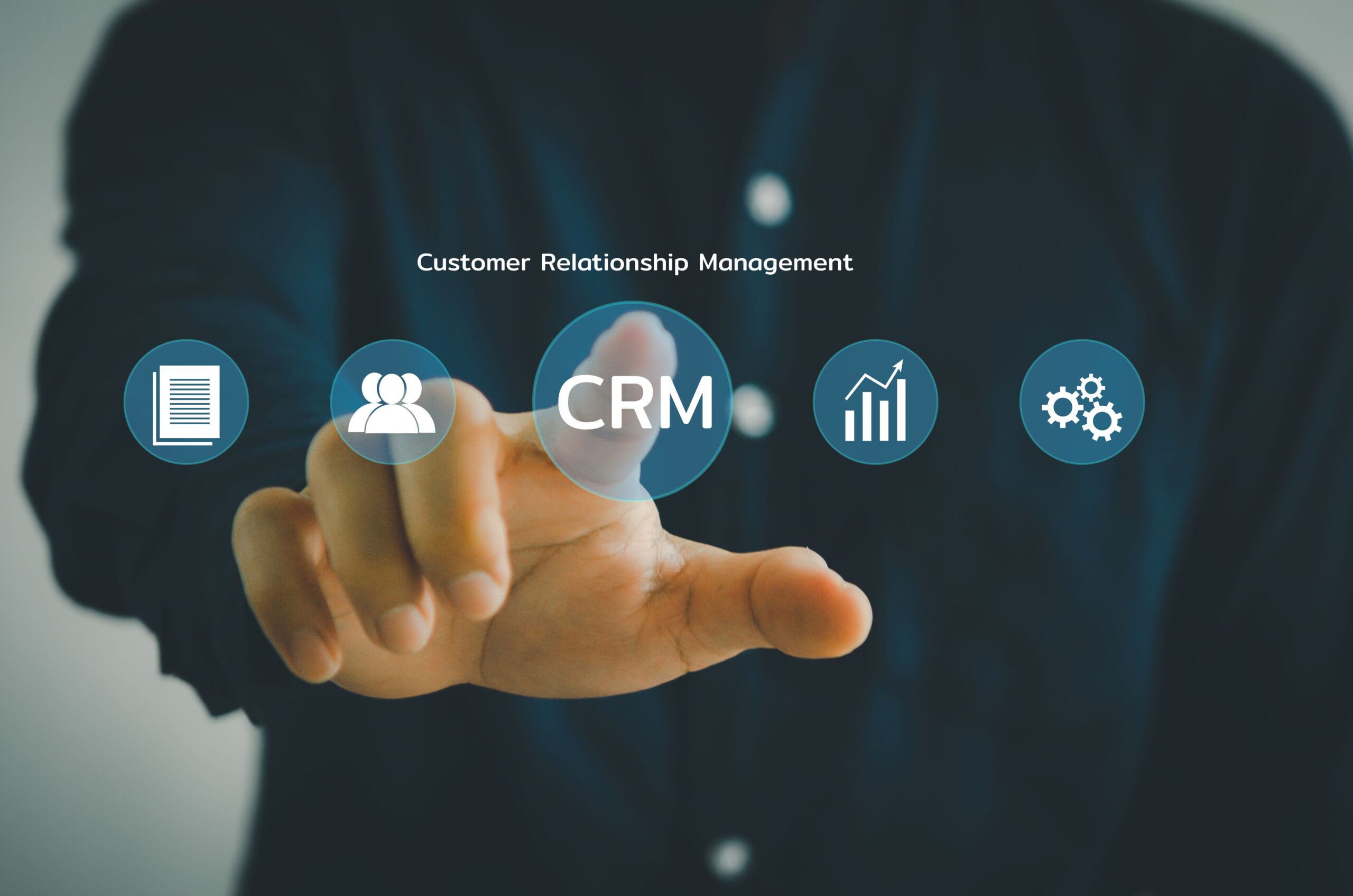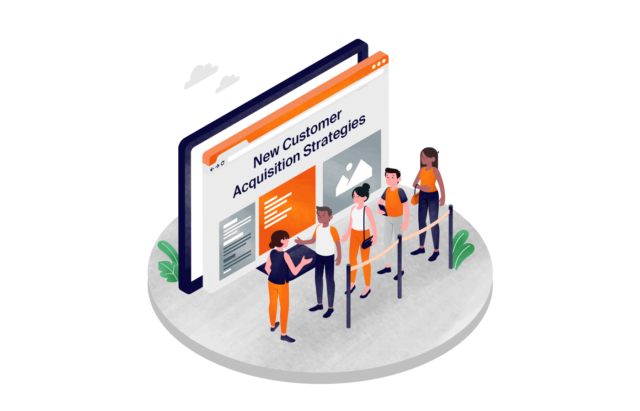In the digital age, the battleground for customer attention has shifted online, making customer acquisition campaigns a linchpin in the marketing strategies of businesses worldwide. These campaigns are designed to attract and convert new customers, playing a critical role in driving growth and building a sustainable customer base. However, the digital landscape is vast and ever-evolving, presenting a unique set of challenges that can make or break a company’s marketing efforts.
The importance of acquisition campaigns in digital marketing cannot be overstated. They not only help businesses reach new audiences but also enable them to engage with potential customers in a targeted and meaningful way. With the right strategy, acquisition campaigns can lead to significant increases in market share and revenue. They are essential for introducing products or services to new markets, re-engaging past customers, and keeping the brand top-of-mind among consumers.
Yet, executing effective acquisition campaigns is no small feat. Marketers face a myriad of challenges, especially when they are without the right tools. Inefficiencies often arise from manual processes and disjointed strategies that fail to leverage data effectively, leading to wasted resources and missed opportunities. High costs are another major concern, as poorly optimized campaigns can quickly deplete budgets without delivering the desired return on investment. Perhaps most critically, the lack of sophisticated tools can result in low conversion rates, meaning that despite reaching a broad audience, few potential customers take the desired action.
These challenges underscore the need for innovative tools and platforms designed to streamline acquisition campaigns. The right technology can automate repetitive tasks, integrate seamlessly with existing marketing stacks, provide advanced analytics for better decision-making, and ultimately, enhance the efficiency and effectiveness of marketing efforts. As we delve deeper into the landscape of acquisition tools, it becomes clear that the success of digital marketing campaigns hinges not just on the strategies employed but also on the technological capabilities at marketers’ disposal.
The Evolution of Acquisition Tools

The landscape of acquisition campaigns has undergone a remarkable transformation over the years, driven by the relentless pace of technological advancement. From the early days of traditional advertising to the sophisticated digital marketing ecosystems of today, the tools and platforms used in acquisition campaigns have evolved significantly, mirroring changes in consumer behavior and technological capabilities.
The Early Days
Initially, acquisition strategies were heavily reliant on traditional media such as print advertisements, billboards, radio, and television. These platforms offered broad reach but limited targeting capabilities, making it challenging to ensure that marketing messages were seen by potential customers.
The tools available for marketers were mostly analog, including mailing lists for direct mail campaigns and broadcast media for mass advertising. While effective for their time, these methods lacked the precision and efficiency demanded by modern marketing landscapes.
The Digital Revolution
The advent of the internet and digital technology marked a seismic shift in acquisition campaigns. Email marketing emerged as an early tool in the digital arsenal, offering a more direct and cost-effective way to reach potential customers. The development of websites and online advertising expanded the toolkit, allowing for targeted campaigns and real-time adjustments based on performance data.
As the internet became more integrated into daily life, search engines and social media platforms rose to prominence, introducing search engine optimization (SEO) and social media marketing as key strategies in acquisition campaigns. Tools for these platforms enabled unprecedented targeting, leveraging user data to reach specific demographics, interests, and behaviors.
The Age of Automation and Integration
The current era is defined by automation, integration, and advanced data analytics that make marketing easier. Tools like customer relationship management (CRM) systems and marketing automation platforms allow for personalized marketing at scale, streamlining the process of nurturing leads and converting them into customers. Integration capabilities mean that these tools can work together seamlessly, providing a holistic view of marketing efforts and enabling a more cohesive strategy across multiple channels.
Artificial intelligence (AI) and machine learning are the latest frontiers, offering predictive analytics, advanced customer segmentation, and automated content creation. These technologies are making it possible to anticipate customer needs and tailor campaigns in ways that were previously unimaginable, significantly increasing the efficiency and effectiveness of acquisition efforts.
The Future
Looking forward, the evolution of acquisition tools is poised to continue at an accelerated pace. Emerging technologies such as augmented reality, voice search, and blockchain are expected to open new avenues for engaging potential customers, further transforming the landscape of digital marketing.
Key Features to Look for in Acquisition Tools

In the fast-paced world of digital marketing, the right acquisition tools can be the difference between a successful campaign and a missed opportunity. As businesses strive to optimize their marketing efforts, certain key features stand out as essential for any tool or platform aiming to streamline acquisition campaigns. Here are the critical features to look for:
1. Automation: Importance of Automating Repetitive Tasks
Automation is at the heart of modern marketing efficiency. By automating repetitive and time-consuming tasks, businesses can focus on strategy and creative elements that require a human touch.
Look for tools that offer robust automation capabilities for email marketing, social media posting, ad placements, and customer segmentation. Automation not only saves time but also ensures consistency in your marketing efforts, reducing the likelihood of errors and improving overall campaign effectiveness.
2. Integration: Capability to Seamlessly Integrate with Other Marketing Tools and Platforms
No tool operates in isolation, and the ability to integrate seamlessly with other software is crucial. Integration ensures that data flows smoothly between platforms, providing a unified view of the customer journey.
Whether it’s CRM systems, email marketing platforms, analytics tools, or social media management solutions, the best acquisition tools are those that play well with others. This interoperability allows for more cohesive and coordinated marketing campaigns, enhancing the ability to track, analyze, and engage customers across multiple touchpoints.
3. Analytics: Advanced Analytics to Measure Performance and ROI
Data is the lifeblood of effective marketing campaigns. Advanced analytics features enable marketers to measure campaign performance in real-time, providing insights into what’s working and what isn’t.
Look for tools that offer detailed analytics on engagement rates, conversion rates, ROI, and other key performance indicators. The ability to drill down into the data helps in making informed decisions, allowing for quick adjustments to optimize campaigns and maximize return on investment.
4. Scalability: Ability to Scale Campaigns Up or Down Based on Performance and Budget
Scalability is essential for growing businesses and fluctuating marketing needs. The right tools should be able to scale with your business, accommodating increases in volume without sacrificing performance.
This includes the ability to manage larger data sets, handle increased traffic, and execute more complex campaigns without requiring a complete overhaul of your marketing technology stack. Scalable tools adapt to your budget and performance needs, ensuring that your marketing efforts remain efficient and effective at any scale.
5. User-Friendliness: Tools that are Easy to Use and Require Minimal Training
Complex tools can become a hindrance rather than a help, especially in teams with varying levels of technical expertise. User-friendliness is paramount; tools should be intuitive, with a clear interface and straightforward functionality.
This ensures that all team members, regardless of their technical background, can effectively use the tools. Minimal training requirements not only save time but also facilitate quicker adoption and smoother integration into existing workflows.
Top Innovative Platforms and Tools for Customer Acquisition Success

The digital marketing landscape is teeming with tools and platforms designed to optimize and streamline acquisition campaigns. These tools vary widely in their capabilities, targeting different aspects of digital marketing from email outreach to social media engagement and content distribution. Here’s a look at some of the leading tools across key categories, highlighting their innovative features.
Email Marketing
- Mailchimp: Known for its user-friendly interface, Mailchimp is a powerhouse for creating, executing, and analyzing email campaigns. Its innovative features include predictive segmentation and send-time optimization, which help in targeting the right customers at the right time, significantly improving open and conversion rates.
- Constant Contact: Constant Contact offers extensive automation capabilities, from welcome emails to triggered email series based on user actions. Its intuitive drag-and-drop editor and real-time reporting tools make it easy to design campaigns and track their performance.
Social Media
- Hootsuite: Hootsuite allows businesses to manage all their social media profiles from a single dashboard, streamlining the process of scheduling posts, engaging with followers, and measuring social ROI. Its comprehensive analytics platform helps in understanding audience behavior across social networks.
- Buffer: Known for its simplicity, Buffer lets marketers schedule posts, analyze performance, and manage all their accounts in one place. Its unique feature, Pablo, allows users to create engaging visuals for their posts, increasing engagement rates.
SEO (Search Engine Optimization)
- SEMrush: SEMrush offers an all-in-one marketing toolkit for digital marketing professionals, including advanced SEO features like keyword research, site audits, and competitor analysis. Its Traffic Analytics tool provides insights into your competitors’ traffic sources, helping in refining your SEO strategy.
- Moz Pro: MOZ Pro is a suite of SEO tools that includes site audits, keyword research, and link analysis. Its Page Optimization feature gives specific recommendations to improve search rankings for different keywords, making it easier to optimize web pages.
Content Marketing
- HubSpot: Beyond its CRM capabilities, HubSpot offers a powerful content marketing platform that includes blog and landing page creation, SEO recommendations, and content analytics. Its integrated approach ensures that content creation is aligned with overall marketing goals.
- CoSchedule: CoSchedule is a content marketing and social media editorial calendar that helps marketers plan, publish, optimize, and automate their content strategy. Its headline analyzer is a unique tool for improving the effectiveness of blog post titles to increase traffic and engagement.
Paid Advertising
- Google Ads: Provides businesses with a platform to create ads that appear on Google’s search engine and other Google properties. Google Ads uses pay-per-click (PPC) pricing, making it easy to control costs and measure ROI. Its machine learning algorithms optimize ad performance, targeting users most likely to convert.
- Facebook Ads Manager: A comprehensive tool for creating, managing, and analyzing ads on Facebook, Instagram, and the Audience Network. Facebook Ads Manager offers detailed targeting options based on demographics, interests, behaviors, and more, ensuring that your ads reach the right audience.
Each of these tools brings something unique to the table, whether it’s through automation, analytics, integration, or all of the above. By leveraging their innovative features, businesses can significantly streamline their acquisition campaigns, ensuring that they not only reach their target audience more effectively but also maximize their marketing spend for better ROI.
Tips for Implementing Tools for Customer Acquisition Success

Integrating new tools into your marketing strategy and ensuring your team is well-versed in their use is crucial for enhancing your acquisition campaigns. Here are some best practices and tips for smooth integration and adoption:
Best Practices for Integrating New Tools
Start with Clear Objectives
Before integrating any new tool, clearly define what you aim to achieve with it. Whether it’s improving engagement rates, increasing conversions, or streamlining workflow, having clear objectives helps in selecting the right tool and measuring its impact.
Assess Compatibility
Ensure the new tool is compatible with your existing marketing stack. It should easily integrate with other platforms you are using, such as your CRM, analytics, and email marketing software. This cohesion is vital for seamless data flow and campaign management.
Pilot Before Full Implementation
Conduct a pilot phase with a small segment of your team or a specific part of your campaign. This approach allows you to identify potential issues and ensure that the tool effectively meets your needs before rolling it out company-wide.
Set Up a Centralized Dashboard
If possible, use a centralized dashboard that can integrate data from the new tool with other sources. This centralized view makes it easier to analyze overall performance and make informed decisions.
Tips on Training Teams and Adopting Platforms
Provide Comprehensive Training
Offer both initial training sessions and ongoing support to ensure team members can effectively use the new tool. Utilize resources provided by the tool’s vendor, such as webinars, tutorials, and customer support, to enhance learning.
Encourage Experimentation
Encourage your team to experiment with the tool’s features. Hands-on experience is one of the best ways to understand a tool’s capabilities and limitations. Create a safe space for trial and error, allowing team members to explore innovative ways to use the tool to achieve your marketing objectives.
Monitor and Share Successes
Regularly monitor the tool’s performance and share successes with your team. Highlighting specific achievements, like an increase in engagement or a successful campaign, can serve as motivation and demonstrate the tool’s value.
Gather Feedback
Collect feedback from your team regarding the tool’s usability, effectiveness, and any issues encountered. This feedback is crucial for troubleshooting problems, making necessary adjustments, and deciding whether the tool meets your long-term needs.
Regularly Review Tool Performance
Continuously assess the tool’s performance against your marketing objectives. Technology evolves rapidly, and what works today may become obsolete tomorrow. Stay informed about new features, updates, and other tools that might offer better solutions.
Integrating new tools into your marketing strategy doesn’t just involve technical setup; it’s also about ensuring your team is equipped to use these tools effectively. By following these best practices and tips, you can enhance your team’s productivity and your campaigns’ effectiveness, driving better results for your business.
Key Takeaways
The digital marketing landscape is constantly evolving, with new tools and technologies emerging at a rapid pace. The success of acquisition campaigns now more than ever relies on the ability to select and utilize the right tools that align with a business’s unique needs and objectives. These tools, ranging from email marketing platforms and SEO optimizers to advanced AI-driven analytics systems, offer the potential to streamline operations, enhance customer engagement, and drive significant improvements in campaign performance.
The importance of choosing the right tools cannot be overstated. The correct suite of tools can automate mundane tasks, provide deep insights into customer behavior, enable personalized marketing at scale, and ultimately, convert prospects into loyal customers. However, with the plethora of options available, marketers face the challenge of determining which tools are best suited to their specific goals.
This is where the encouragement to experiment comes into play. In the rapidly changing digital world, what works today might not be as effective tomorrow. Marketers must therefore adopt a mindset of continuous learning and experimentation. Exploring new technologies and platforms can uncover untapped opportunities for growth and efficiency. By testing different tools and strategies, businesses can discover innovative ways to reach and resonate with their target audience.
In conclusion, the key to successful acquisition campaigns lies in the careful selection, integration, and innovative use of digital marketing tools. By embracing experimentation and being willing to explore new technologies, marketers can ensure their strategies remain effective, relevant, and competitive. The future of marketing is bright for those who are proactive, adaptive, and always ready to leverage the best that technology has to offer.







